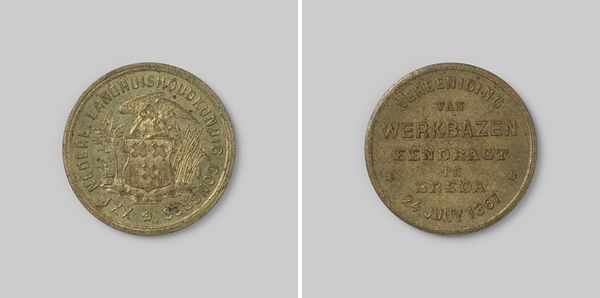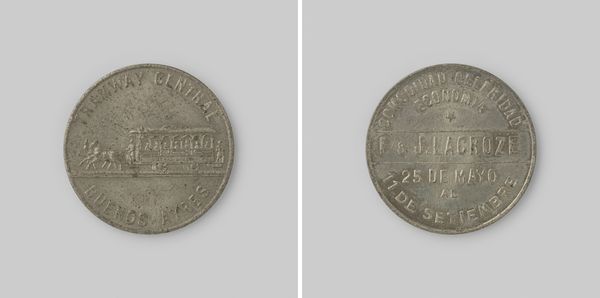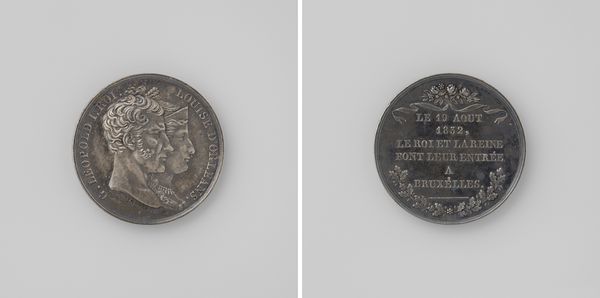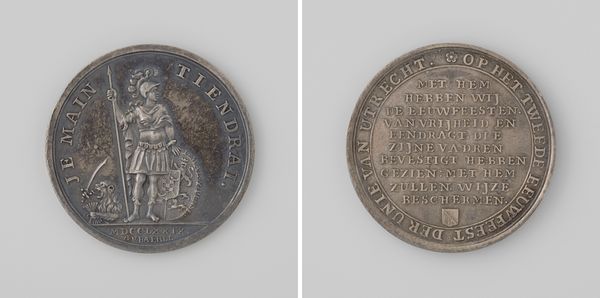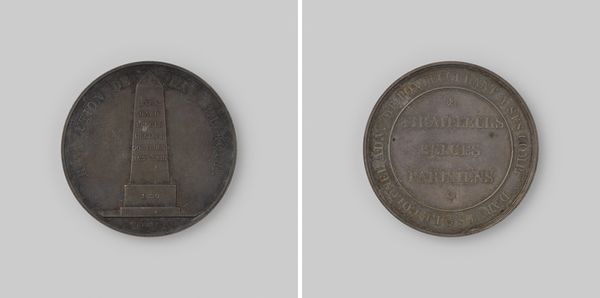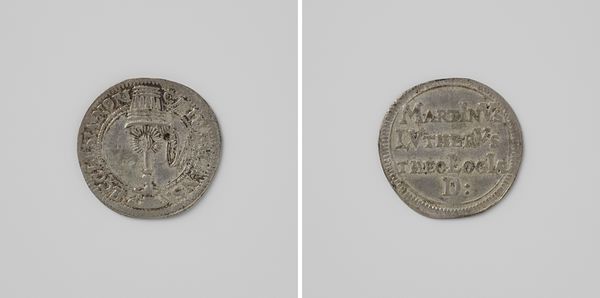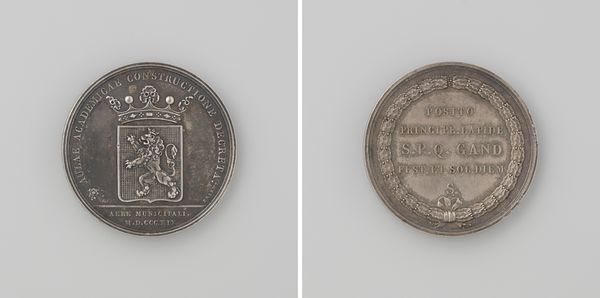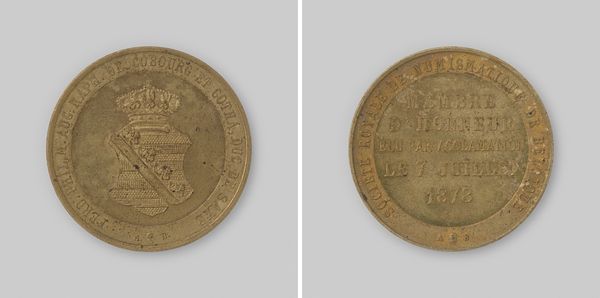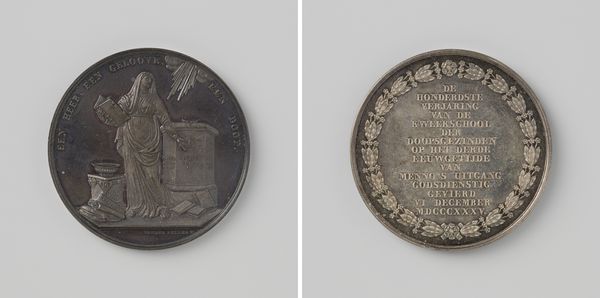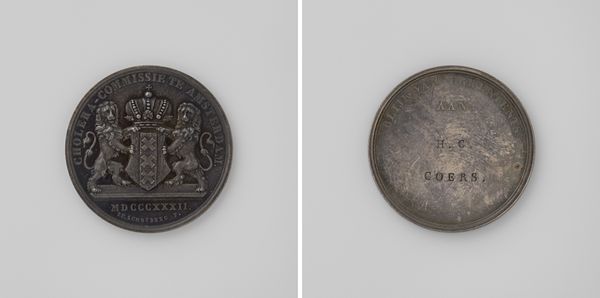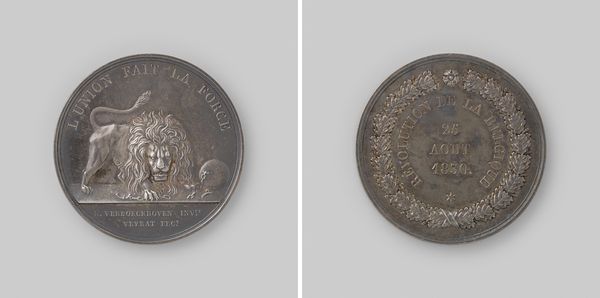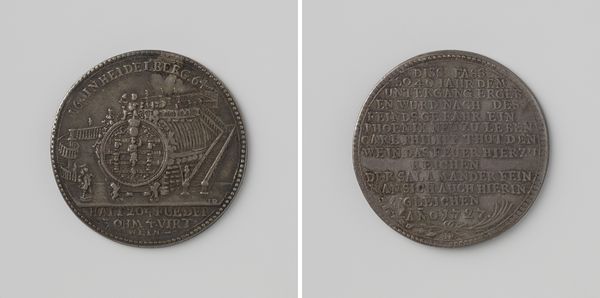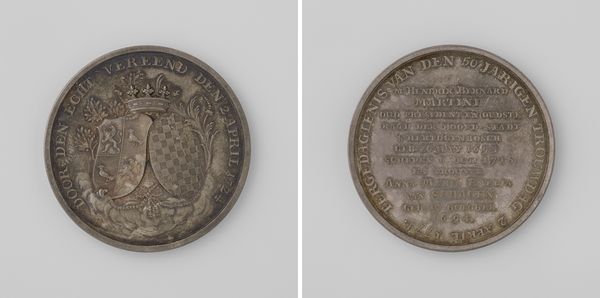
Dimensions: diameter 2.5 cm, weight 2.50 gr
Copyright: Rijks Museum: Open Domain
Curator: What we have here is a medal created by Christian Daniel Öxlein in 1742, titled "Tweede eeuwfeest van de reformatie te Regensburg," commemorating the bicentennial of the Reformation in Regensburg. Its metallic sheen catches the eye, and the imagery, though small, seems quite dense. How does this object strike you? Editor: I find it fascinating how a small metal object like this can hold so much history and meaning. What aspects of this work do you find particularly significant? Curator: The commemorative nature of this medal interests me, particularly in relation to power dynamics. Consider the Reformation itself: it wasn't just about religious doctrine; it fundamentally reshaped social and political landscapes across Europe, challenging established authorities. How do you think a commemorative object like this might participate in those power structures, even centuries later? Editor: I guess by celebrating and remembering the Reformation, it's also implicitly reinforcing its values and legacy, potentially creating a narrative that favours certain groups over others. Is that what you mean? Curator: Precisely. This medal serves as a form of historical endorsement. But also, who was it made *for*? What audience did Öxlein have in mind? Medals were often commissioned by or for elite circles. In that sense, it's also creating a shared identity and solidifying group cohesion among people who already benefit most from that shift in power dynamics caused by the reformation. Does considering the history like this make you look at it any differently? Editor: Definitely. It makes me realize that even seemingly neutral historical commemorations can have embedded biases and power implications. Thanks, I learned a lot. Curator: And I'm reminded that objects can act as both reflections and shapers of history. It’s a potent reminder of how historical narratives are constructed and who gets to participate in their creation.
Comments
No comments
Be the first to comment and join the conversation on the ultimate creative platform.
